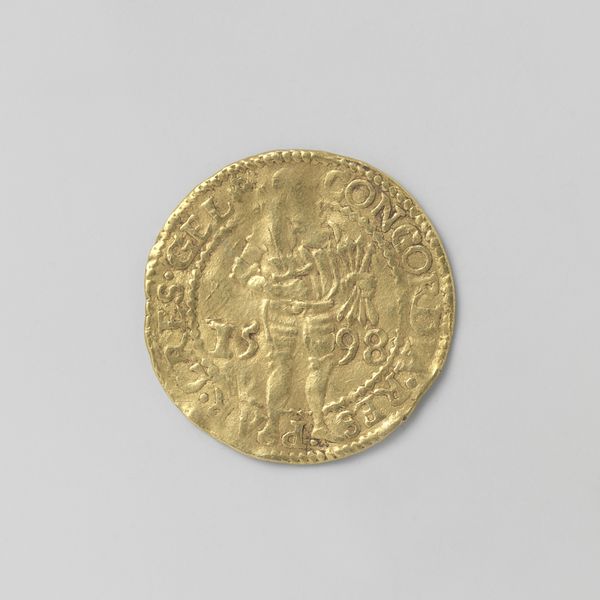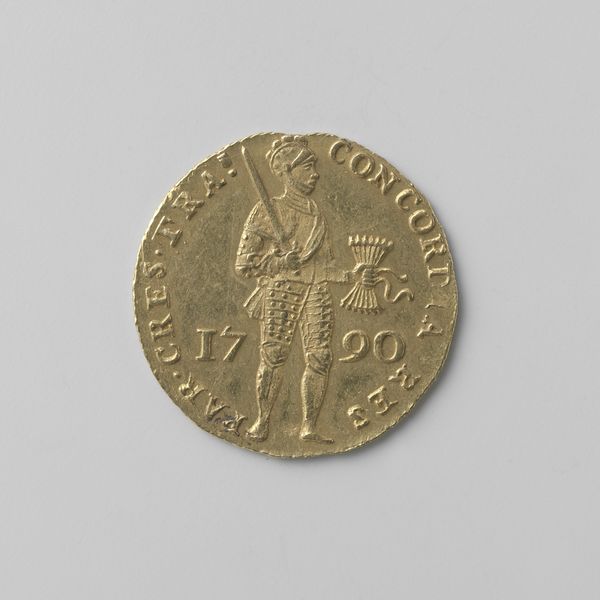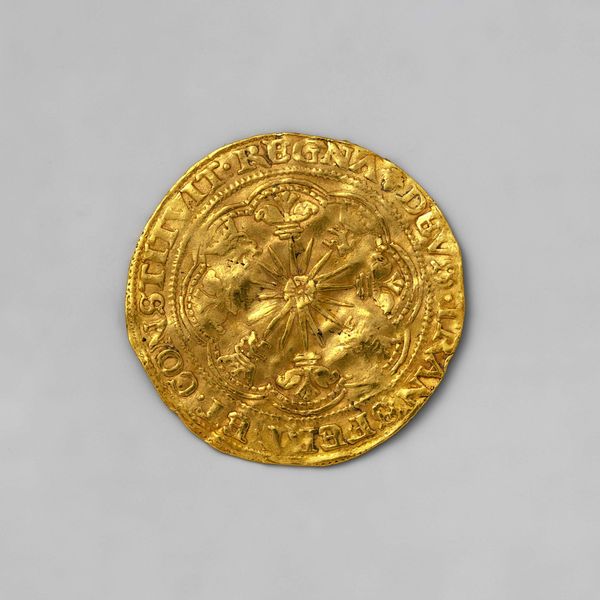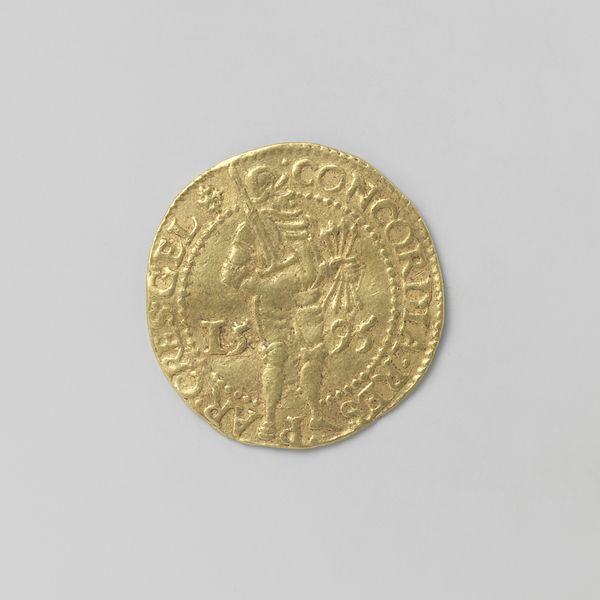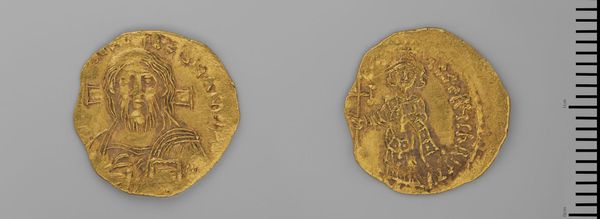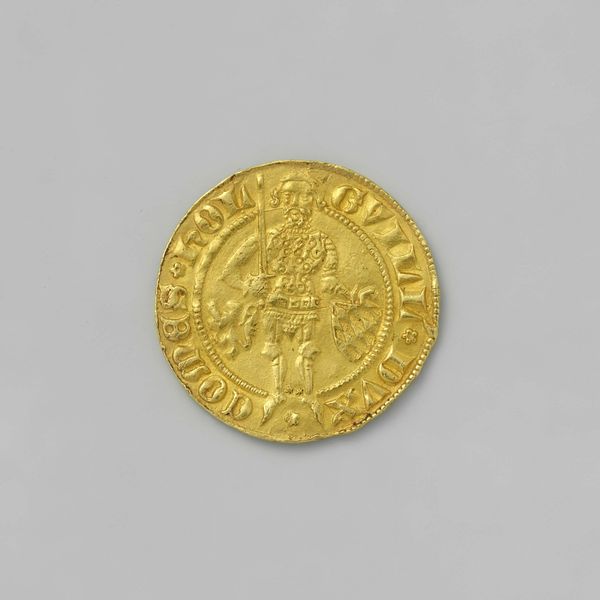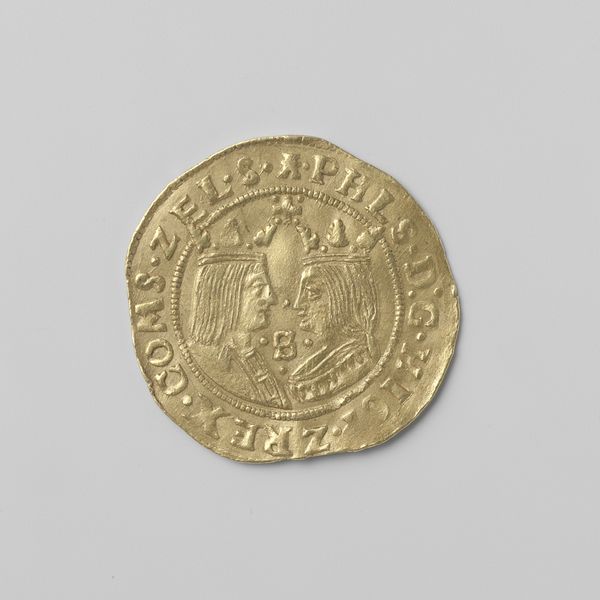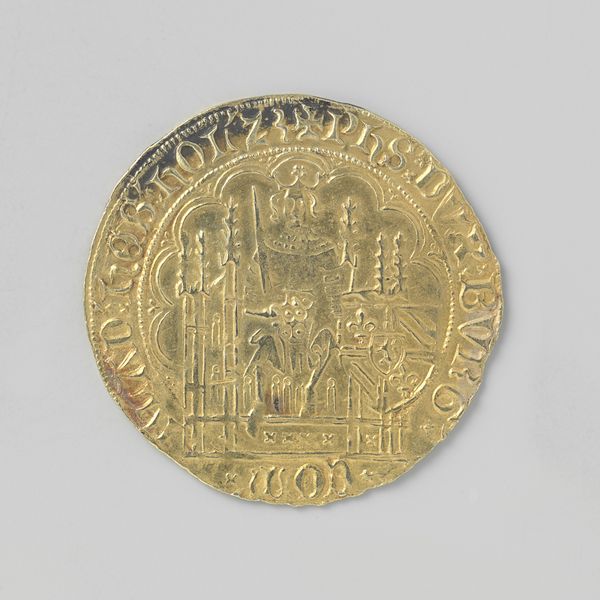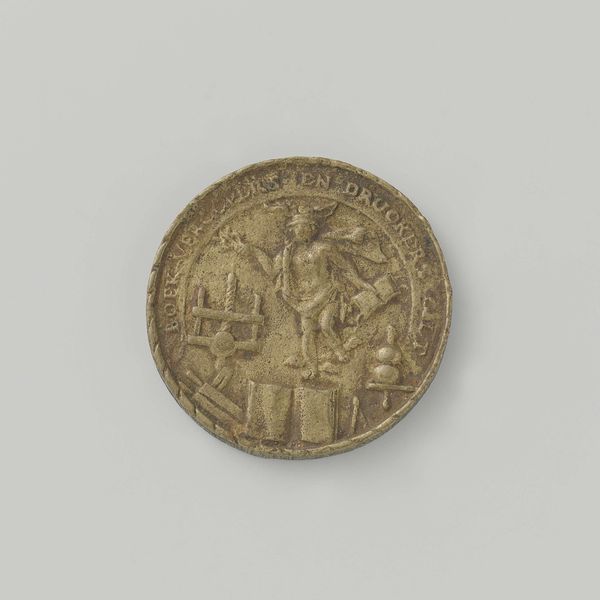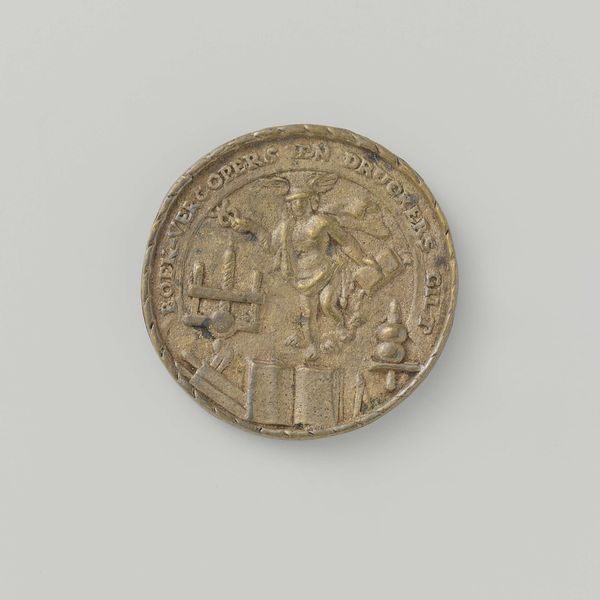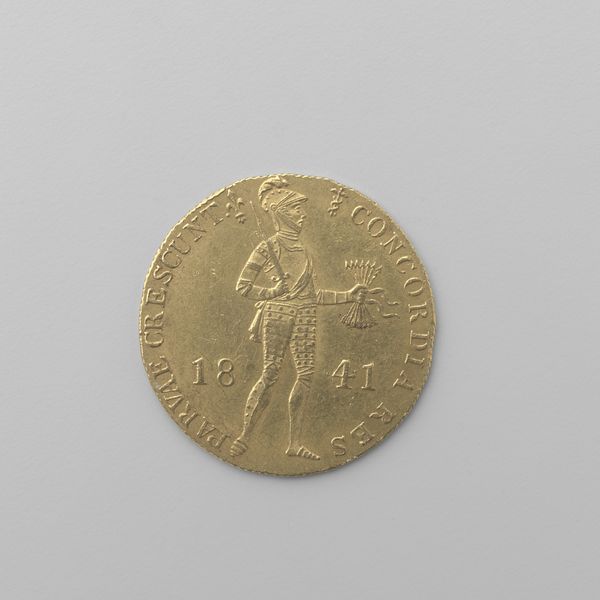
Plaquette van verguld brons met voorstelling Pallas Athene 17th century
0:00
0:00
hansvonaachen
Rijksmuseum
relief, bronze, sculpture
#
allegory
#
baroque
#
relief
#
bronze
#
figuration
#
geometric
#
sculpture
#
history-painting
Copyright: Rijks Museum: Open Domain
Curator: Here we have a remarkable example of Baroque craftsmanship: a gilded bronze plaquette from the 17th century, depicting Pallas Athene. The Rijksmuseum attributes it to the workshop of Hans von Aachen. Editor: My immediate impression is one of contained energy, almost suppressed dynamism. The circular form really focuses the eye on the swirling composition. There's a density to the figures, but also an airy lightness because of the gilding. Curator: Indeed, the material itself is telling. Bronze suggests durability and importance, and the gilding elevates it, moving it away from utilitarian function. Such items were part of a burgeoning culture of collecting precious things in the 17th century. What do you make of the figuration? Editor: Well, formally speaking, it’s incredibly rich. The goddess Athene is presented centrally, and she is presiding over what appears to be a consultation or reception of supplicants. What interests me particularly is the way the artist uses the medium of bronze to give everything volume but yet simultaneously flatten it out for the sake of pictorial narration. Note how the city rises almost like a backdrop. Curator: Right. Think about what bronze casting allows; this isn’t merely a representation but a three-dimensional object claiming status through a complex, industrial, labor-intensive manufacturing process. Also, consider the allegorical and historical context of choosing Athene; wisdom, warfare, arts and crafts—this Plaquette speaks to specific cultural values during the height of the Dutch Golden Age. Who might have been the patron? What type of labour was necessary? What level of commerce had to be attained to import bronze and then gild it? Editor: Good points. And what of the formal resolution between all of this labour, commerce, material and cultural symbolism? What's the overall design aiming to achieve? Curator: Perhaps it’s a way to assert not just status but control over resources—both material and intellectual. But for me, I keep thinking about the sheer materiality here, bronze and gilding—that intense human effort needed. Editor: I agree about the work involved; however, I find my attention drawn repeatedly to the composition itself, the relationships between figures, their gestures. Curator: It's amazing how a small piece can spark so many considerations. Editor: Absolutely. I think we’ve both shown that this small yet richly detailed artwork definitely invites deep reflection and prompts multiple interpretations.
Comments
No comments
Be the first to comment and join the conversation on the ultimate creative platform.
